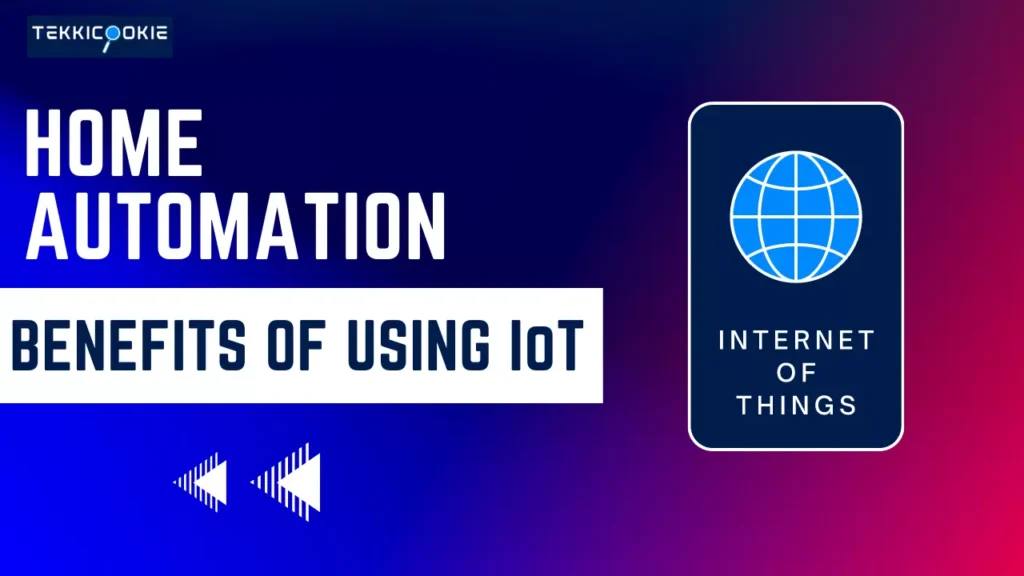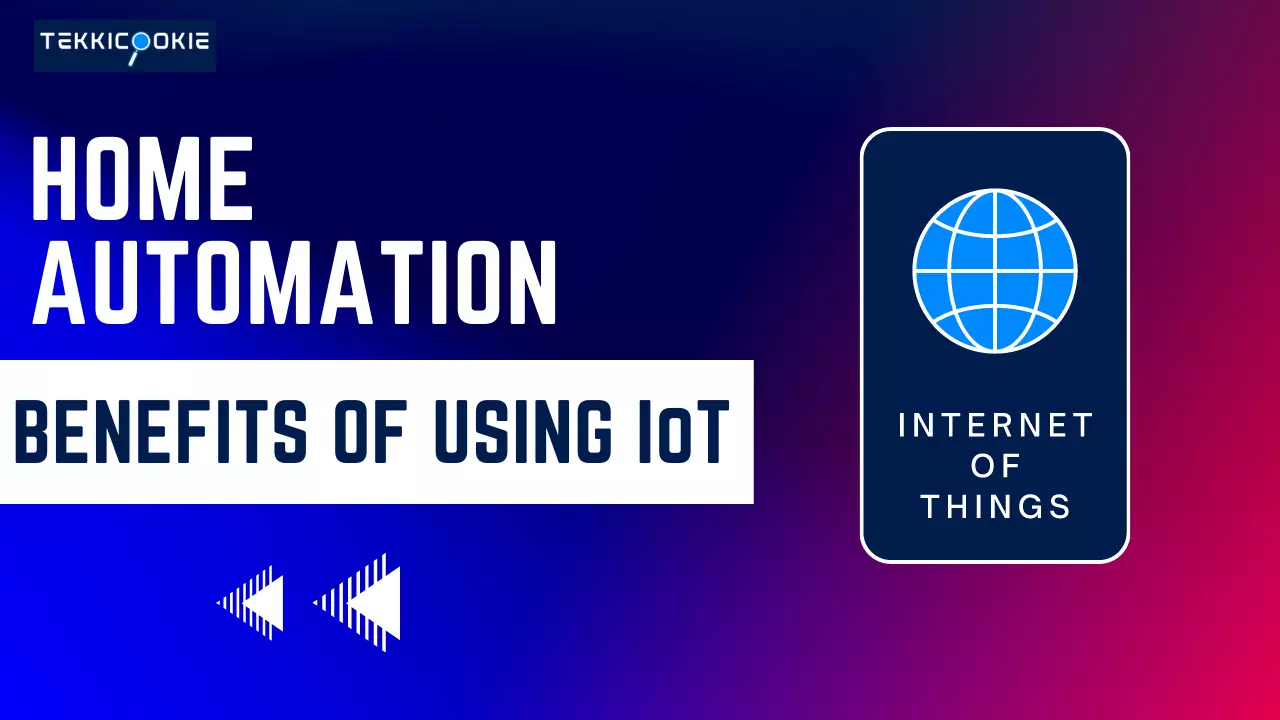In today’s modern world, technology has revolutionized our daily lives in countless ways. One such innovation is home automation using the Internet of Things (IoT), which brings together the power of connectivity and automation to create a smarter and more convenient living environment. In this article, we will delve into the concept of home automation using IoT, exploring its components, benefits, applications, challenges, and future trends.

Components of Home Automation
Home automation using IoT relies on a variety of components to function seamlessly.
At its core, it involves the integration of sensors and actuators that work in tandem to gather information from the environment and execute actions based on predefined rules and user preferences.
Sensors play a crucial role in collecting data from the surroundings, and there are various types available for different purposes.
Motion sensors are commonly used to detect movement within a space, enabling automated responses such as turning on lights when someone enters a room.
Temperature sensors, on the other hand, provide valuable insights into the ambient temperature, allowing homeowners to regulate their HVAC systems more efficiently.
Light sensors are utilized to detect changes in light levels, which can trigger actions such as adjusting the brightness of indoor lighting based on natural light conditions.
Actuators, on the other hand, are responsible for carrying out actions based on the information received from sensors.
Smart thermostats, for instance, can adjust the temperature settings of HVAC systems based on predefined preferences and occupancy patterns.
Smart locks offer enhanced security features, allowing homeowners to remotely lock or unlock doors using their smartphones.
Smart lighting systems enable homeowners to control and automate their lighting, creating customized scenes and schedules.
To enable communication and connectivity between these components, various network technologies come into play.
Wi-Fi is a ubiquitous wireless protocol that allows devices to connect to the internet and exchange data.
Bluetooth is another commonly used technology that enables short-range communication between devices, often employed for connecting smartphones and other portable devices to home automation systems.
Zigbee and Z-Wave are wireless protocols specifically designed for home automation, offering low-power and mesh networking capabilities, allowing for reliable communication between devices spread throughout the home.
A control hub serves as the central brain of the home automation system, allowing users to manage and control all connected devices conveniently.
This hub acts as a bridge between the devices and the user interface, facilitating the coordination of different components and ensuring smooth communication.
Depending on the preference and convenience of homeowners, there are multiple control options available.
Centralized control panels offer a dedicated interface for managing all the connected devices, providing a comprehensive overview and control.
Voice control has gained popularity with the rise of virtual assistants like Amazon Alexa and Google Assistant, enabling users to command their devices through natural language interactions.
Smartphone apps provide a user-friendly interface that allows homeowners to control and monitor their smart devices remotely, even when they are away from home.
Read More: What are the Types of Automation?
Benefits of Home Automation Using IoT
Home automation using IoT brings numerous benefits that enhance the quality of life for homeowners.
First and foremost, convenience and efficiency are significantly improved. The ability to access and control home devices remotely empowers homeowners with unparalleled convenience.
Whether adjusting the temperature of their home while still at work or turning off lights that were accidentally left on, remote access eliminates the need for physical presence and allows for efficient management of the home environment.
Automated routines and schedules further enhance convenience, as homeowners can program their devices to perform specific actions at predetermined times.
For example, lights can be programmed to turn on automatically in the evening, or the coffee maker can start brewing a fresh cup in the morning, aligning with the homeowner’s daily routine.
In addition to convenience, home automation using IoT promotes energy savings and environmental sustainability.
By having remote access to devices, homeowners can actively monitor and control energy consumption.
For instance, they can adjust the temperature settings on their smart thermostats based on occupancy patterns or external weather conditions, optimizing energy usage and reducing wastage.
Furthermore, the automation capabilities of home devices contribute to energy efficiency. Lighting automation, for example, ensures that lights are only on when needed, preventing unnecessary energy consumption and reducing electricity bills.
Enhanced security is another significant benefit of home automation using IoT. Smart security systems offer advanced features such as surveillance cameras, motion sensors, and intrusion detection mechanisms.
Homeowners can monitor their property in real-time, receive instant alerts on their smartphones regarding any suspicious activities, and take appropriate actions if necessary.
The integration of smart locks allows for secure access control, enabling homeowners to remotely lock or unlock doors and provide temporary access codes to visitors.
These security features provide peace of mind, especially when homeowners are away from home for an extended period or want to ensure the safety of their loved ones.
Moreover, home automation using IoT enhances comfort and ambience within the home. Smart thermostats provide precise control over the indoor temperature, ensuring optimal comfort based on personal preferences.
For example, homeowners can schedule the HVAC system to warm up the house before they arrive home from work. Lighting automation allows for the creation of customized lighting scenes to match different moods and activities.
Whether it’s dimming the lights for a cosy movie night or brightening them for a vibrant dinner party, smart lighting systems enable homeowners to effortlessly set the desired ambience.
Read More: What is Home Automation Useful For?
Applications of Home Automation Using IoT
Home automation using IoT finds application in various aspects of daily life, each catering to specific needs and preferences.
Smart lighting systems offer a range of automated lighting control features. Homeowners can program lights to turn on or off at specific times, creating the illusion of occupancy when away from home, and enhancing security.
Lighting scenes can be created for different occasions, adjusting brightness and colour to match the desired ambience.
Furthermore, energy-efficient lighting solutions, such as LED bulbs and automated dimming functionality, contribute to energy conservation while still providing optimal lighting experiences.
Smart security systems provide comprehensive protection for homes. With the integration of surveillance cameras and motion sensors, homeowners can monitor their properties in real time and receive instant notifications on their smartphones in case of any unusual activities.
The ability to remotely control the security system and access live video feeds offers a sense of security and enables homeowners to take immediate action if required.
Integration with other devices, such as smart lighting, allows for coordinated responses to security events.
For example, when a motion sensor detects movement, it can trigger the lights to turn on automatically, creating the impression that someone is present even when the homeowners are away.
Home entertainment is another area where home automation using IoT finds significant application.
Multi-room audio systems allow homeowners to enjoy synchronized music throughout their homes, creating a seamless audio experience.
By integrating entertainment systems with home automation, users can control audio, video, and lighting settings from a single interface, simplifying the overall experience.
Home theatre automation takes the movie-watching experience to the next level, enabling homeowners to automate the control of audio, video, and lighting aspects to create an immersive cinematic experience at the touch of a button.
Energy management is a crucial aspect of home automation. Smart thermostats enable homeowners to have precise control over their HVAC systems, adjusting temperature settings based on occupancy patterns and external conditions.
Energy monitoring features provide insights into electricity consumption, allowing users to identify energy-intensive appliances and take measures to reduce wastage.
Appliance control and optimization enable homeowners to manage and automate the operation of devices such as washing machines, dishwashers, and other appliances, ensuring optimal energy usage and efficiency.
Challenges and Considerations
While home automation using IoT offers numerous advantages, there are certain challenges and considerations to be mindful of when implementing such systems.
Compatibility and interoperability are critical factors to consider when setting up a home automation system.
Different devices may employ various standards and protocols, making integration and communication between them more complex.
It is essential to ensure that the devices selected are compatible with each other and can communicate seamlessly.
Opting for devices that support open standards and protocols can help mitigate interoperability issues and ensure a smoother integration process.
Privacy and security are paramount in the interconnected world of home automation.
With a multitude of devices connected to the internet, it is crucial to implement proper data encryption and protection measures to safeguard sensitive information from unauthorized access.
Regular firmware updates should be performed to address potential vulnerabilities and ensure the latest security patches are in place.
Additionally, users must adopt robust security practices such as using strong passwords, enabling two-factor authentication, and monitoring device activity regularly.
Cost and scalability are practical considerations for homeowners. Home automation systems often require an initial investment in devices, infrastructure, and installation.
It is important to budget accordingly and select devices that align with both needs and budget.
Additionally, considering the scalability of the system is crucial. Homeowners may want to expand or upgrade their automation capabilities in the future, so selecting a flexible and scalable system ensures future compatibility and avoids costly replacements or upgrades.
Future Trends in Home Automation Using IoT
The future of home automation using IoT is filled with exciting possibilities. Emerging technologies and trends are set to revolutionize the way we interact with our homes.
Artificial intelligence (AI) and machine learning (ML) will play a significant role in enhancing automation capabilities.
These technologies enable devices to learn user preferences, adapt to changing circumstances, and automate tasks intelligently.
With AI and ML, home automation systems can anticipate user needs and make personalized recommendations.
For example, based on historical data and user patterns, the system can automatically adjust the thermostat to the optimal temperature when the homeowner usually returns home.
Voice recognition and natural language processing will continue to advance, making voice commands even more intuitive and seamless.
Virtual assistants like Amazon Alexa and Google Assistant have already gained popularity, and their integration with home automation systems allows users to control their devices effortlessly through voice interactions.
Homeowners can simply give voice commands to adjust lighting, set the temperature, or even request information from the internet, making the interaction with the smart home more natural and convenient.
Furthermore, the integration of home automation systems with smart cities and broader IoT ecosystems is an exciting prospect.
Connecting homes to the broader infrastructure of a smart city enables homeowners to access information about traffic, weather conditions, and energy consumption patterns.
This integration allows for more informed decision-making, such as adjusting home energy usage based on the overall energy demand in the city, optimizing resource allocation, and contributing to a sustainable future.
Conclusion
Home automation using IoT presents a world of possibilities for homeowners. By harnessing the power of connectivity, automation, and intelligent systems, individuals can enjoy convenience, security, and comfort like never before.
From smart lighting and security systems to energy management and home entertainment, the applications of home automation are vast.
However, it is essential to consider compatibility, privacy, security, cost, and scalability when embarking on the home automation journey.
The future of home automation is promising, with artificial intelligence, voice recognition, and integration with smart cities set to revolutionize the way we live.
Embracing home automation using IoT opens up a world of possibilities, making our homes smarter, safer, and more efficient.
